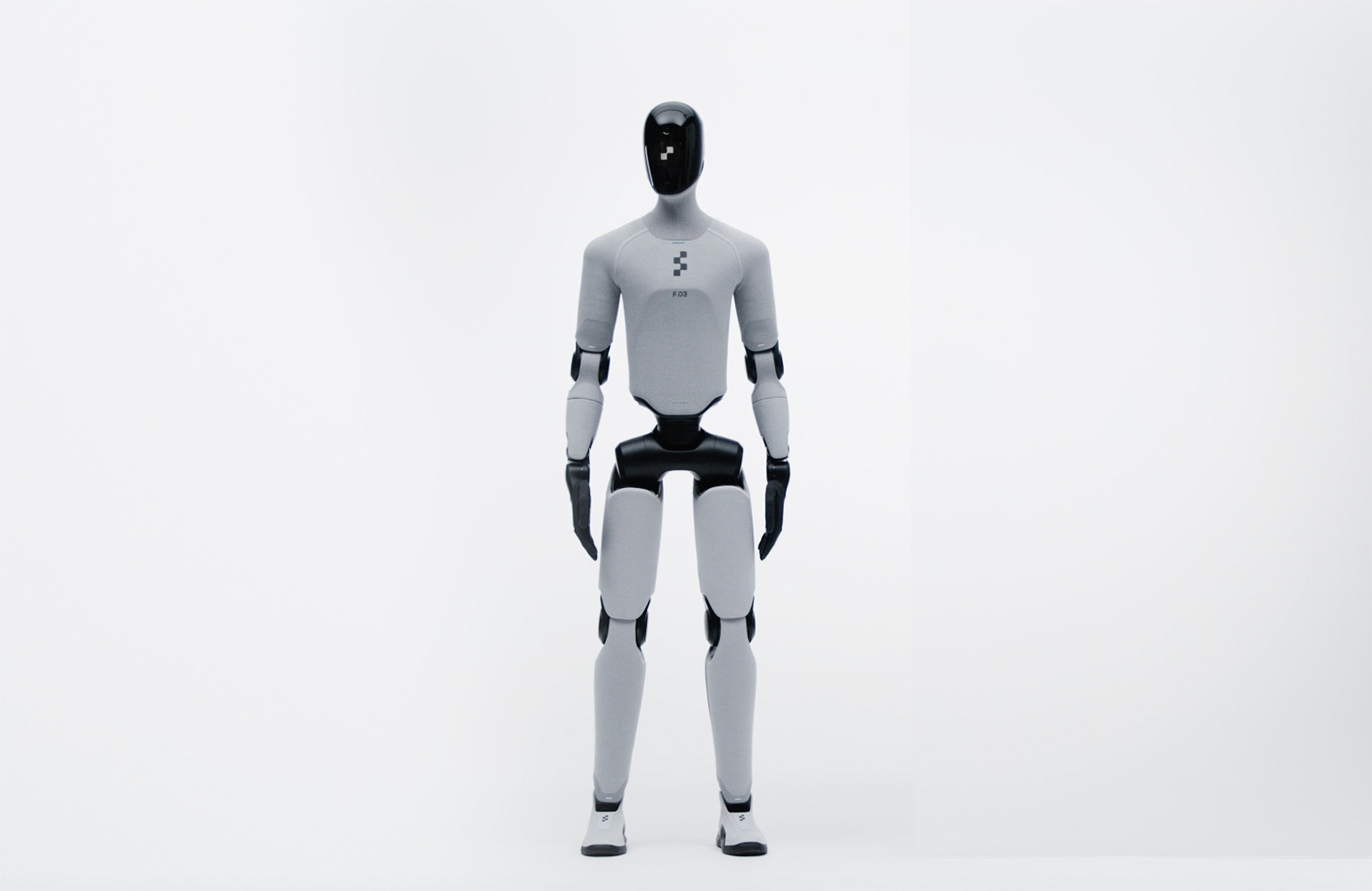How Figure AI’s F.03 Humanoid Robot Is Revolutionizing Homes and Factories with Advanced Robotics

Figure AI’s Third-Generation Robot F.03: Lighter, Smarter, and Ready for Homes and Factories
Figure AI has officially revealed its latest creation: the F.03, a third-generation humanoid robot built from the ground up for everyday environments—residences, workplaces, and beyond. This marks a defining leap forward in both machine intelligence and manufacturability, pushing the boundaries of what’s possible with autonomous robotics. The company is not just aiming for technical breakthroughs; it’s engineering for real-world scale, announcing plans to manufacture up to 12,000 units annually, with an ambitious target of 100,000 robots assembled over the next four years.
From Machined Metal to Textile: A More Human-Like Presence
Unlike its predecessors, the new F.03 is wrapped in soft, textile-based coverings rather than hard-shell components. This shift isn’t merely cosmetic; it’s a deliberate safety strategy, designed to minimize pinch hazards and create a more approachable, human-like presence in shared spaces. The use of multi-density foam further enhances protection, especially in households and offices where close human-robot interaction is essential. This choice signals a fundamental departure from traditional industrial robotics, prioritizing both safety and aesthetics for mass adoption.
Total Sensory Overhaul: Hands, Eyes, and the Helix Mind
The sensory suite of the F.03 has undergone a complete redesign. Every hand is now equipped with fingertip sensors capable of detecting pressures as subtle as three grams, allowing the robot to distinguish between a secure grip and a potential slip with remarkable accuracy. Cameras, upgraded for high-speed visual processing, are not only placed in the head but also integrated into the hands themselves, providing the Helix AI system—Figure’s proprietary vision-language-action intelligence—with unprecedented environmental awareness and real-time decision-making capabilities.
Machine perception is further enhanced by millimeter-wave (mmWave) wireless data transfer at 10 Gbps, enabling entire fleets of F.03 robots to upload terabytes of observational data for continuous learning. This end-to-end pixels-to-action architecture means the F.03 can learn directly from human demonstrations and environmental feedback, pushing the state-of-the-art in embodied AI.
Power, Voice, and the Battery That Changes Everything
Energy efficiency and safety have been completely reengineered. The new custom battery system, developed in-house for the F.03, delivers 2.3 kWh of capacity—enough for five hours of peak operation on a single charge. The battery is not just more powerful; it’s safer, with multi-layered protection against abuse, and has been certified to international safety standards. Charge time is reduced via 2 kW fast charging with active cooling, ensuring minimal downtime in commercial operations.
Wireless charging is now integrated, eliminating the need for manual plug-in and streamlining operation in both homes and workplaces. Enhanced voice control and an improved audio system allow for natural, seamless communication between humans and the machine. The result is a robot that’s not only more independent but also easier and safer to interact with day-to-day.
Redefining Dexterity and Physical Intelligence
In addition to its sensory and power developments, the F.03 boasts a hand system purpose-built for precise, adaptive manipulation. The combination of high-resolution tactile sensing, increased fingertip surface area, and advanced compliance enables the robot to handle everything from delicate glassware to irregular, flexible packaging. In industrial settings, the redesigned actuators and higher torque density allow the F.03 to pick and place objects twice as fast as previous models, making it a plausible candidate for tasks that were once the exclusive domain of specialized automation.
Each unit can also be customized with company-specific uniforms, logos, and finishes, and side screens help identify robots in large, coordinated fleets. The modularity and scalability of the design mean that the F.03 is as much at home in a factory as it is in a residence, with configuration options that span the spectrum from utilitarian to personable.
Designed for Mass Production and Real-World Deployment
Figure AI’s vision for the F.03 is not limited to technological innovation—it’s a blueprint for economic and industrial scale. The company’s new BotQ facility is built for high-volume output, with components and assembly processes engineered to reduce costs by 78% compared to the previous generation. The F.03 is lighter, slimmer, and 9% less massive than its predecessor, making it easier to transport, install, and maneuver in tight spaces.
All actions in the official demonstration video are performed autonomously, without remote operation. This is a significant milestone, not just for the company but for the field of general-purpose robotics: a machine that can learn, adapt, and work reliably without constant human oversight.
Conclusion: The Dawn of a New Era in Robotics
With its F.03 model, Figure AI is redefining the benchmarks for safety, intelligence, and scale in humanoid robotics. The integration of advanced sensory systems, autonomous AI, and purpose-built manufacturing architecture marks the arrival of a machine designed for coexistence in human environments—not just as a tool, but as a collaborative agent. These androids represent more than a technical evolution—they are a tangible step toward a future where intelligent machines are as commonplace as smartphones, delivering value across industries and households alike. The F.03 isn’t just a product; it’s a signal of the accelerating convergence of robotics and everyday life.
Keywords: Figure AI, F.03 humanoid robot, Helix AI, advanced robotics, tactile sensors, textile-wrapped robots, wireless charging, mass manufacturing, autonomous systems, industrial automation, battery technology, voice control, smart robots, future of robotics
